Hello Energetic Forum!
Its been a couple years since I've started a thread here on these forums and after adding to the R-charge thread, i've felt like i should leave that for others to discuss their experiences and open one dedicated to my build specifically.
I apologize if some of what i post here is repeated from that thread. However i have just recently posted 2 videos to youtube to illustrate my motor in action.
The first is a basic overview of my arrangement and running characteristics.
https://www.youtube.com/watch?v=y8OBRr8VVDE
In the second video i demonstrate "Generator Mode" as described in the Advanced Bedini Handbook that Aaron and Peter put together.
https://www.youtube.com/watch?v=6MDTQBsDqdw
Brief overview of my build:
Primary Batteries : 12 - 12volt deep cycle 130 amp hour batteries arranged in parallel for 24volt @ INPUT. Charged by continuous connection to 1280 watt solar array.
Secondary Batteries: 2 separate banks of 8 - 12volt deep cycle 130 amp hour batteries arranged in parallel for 24volt @ output. Charged, alternated and discharged on a 3600 watt 24volt inverter for house hold use daily.
4 Dual Pole Motor - basic kit provided by R-charge.net C/O Rick Friedrick
-32 individual MJL21194 transistor circuits with 1N5408 blocking diodes.
-4 coils of 8 strand 18 guage wire as power coils to 32 Bedini circuits.
-2 inner hub timing wheels. One with 8 slots for opto microprocessor and trigger transistor 2n3440 to MJL21194 gate transistor to each of the 4 - 8 circuit boards. Second with 1 slot for opto microprocessor to fire once per full rotor revolution (8 power cycles) via 2n3440 transistor to gate of VS - 50RIA100 Thyristor SCR which manages the collection and dumping of FXR3 6800uF 6800MFD 400VDC capacitors on to the secondary battery banks as well as separate timer to SCR on the same wheel for generator coil output.
-2 FXR3 capacitors are in parallel on the discharge circuit and 2 capacitors in parallel conditioning the rectified generator coil output.


Most other details are fairly self explanatory.
Thank you for your interest. I'll be posting more here on a regular basis and making more videos over the next few weeks. I'm looking forward to some guidance on the best way to load the generator coils in my set up to loop back into the COP equation.
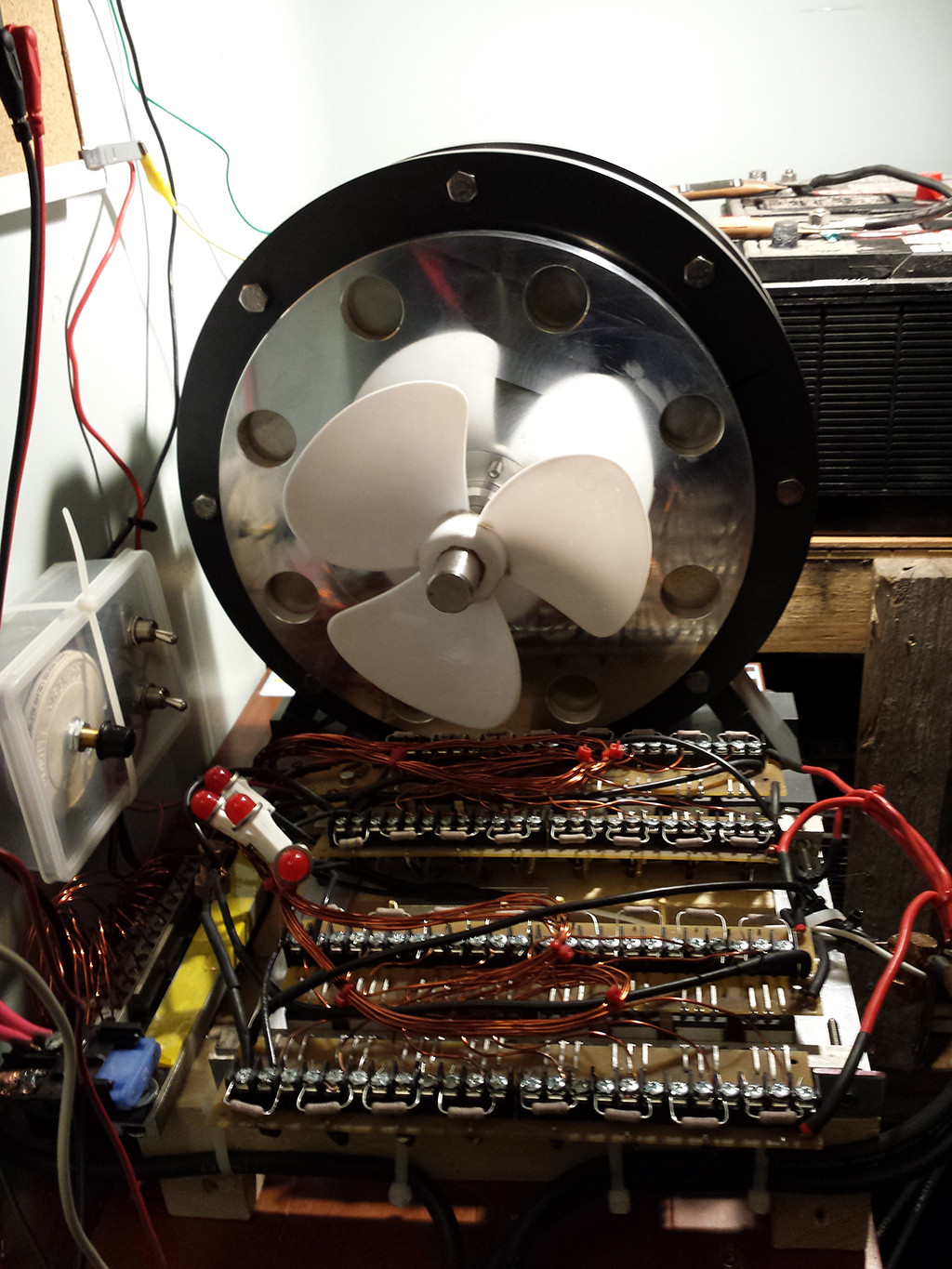
Sincerely,
Darcy Klyne
Its been a couple years since I've started a thread here on these forums and after adding to the R-charge thread, i've felt like i should leave that for others to discuss their experiences and open one dedicated to my build specifically.
I apologize if some of what i post here is repeated from that thread. However i have just recently posted 2 videos to youtube to illustrate my motor in action.
The first is a basic overview of my arrangement and running characteristics.
https://www.youtube.com/watch?v=y8OBRr8VVDE
In the second video i demonstrate "Generator Mode" as described in the Advanced Bedini Handbook that Aaron and Peter put together.
https://www.youtube.com/watch?v=6MDTQBsDqdw
Brief overview of my build:
Primary Batteries : 12 - 12volt deep cycle 130 amp hour batteries arranged in parallel for 24volt @ INPUT. Charged by continuous connection to 1280 watt solar array.
Secondary Batteries: 2 separate banks of 8 - 12volt deep cycle 130 amp hour batteries arranged in parallel for 24volt @ output. Charged, alternated and discharged on a 3600 watt 24volt inverter for house hold use daily.
4 Dual Pole Motor - basic kit provided by R-charge.net C/O Rick Friedrick
-32 individual MJL21194 transistor circuits with 1N5408 blocking diodes.
-4 coils of 8 strand 18 guage wire as power coils to 32 Bedini circuits.
-2 inner hub timing wheels. One with 8 slots for opto microprocessor and trigger transistor 2n3440 to MJL21194 gate transistor to each of the 4 - 8 circuit boards. Second with 1 slot for opto microprocessor to fire once per full rotor revolution (8 power cycles) via 2n3440 transistor to gate of VS - 50RIA100 Thyristor SCR which manages the collection and dumping of FXR3 6800uF 6800MFD 400VDC capacitors on to the secondary battery banks as well as separate timer to SCR on the same wheel for generator coil output.
-2 FXR3 capacitors are in parallel on the discharge circuit and 2 capacitors in parallel conditioning the rectified generator coil output.


Most other details are fairly self explanatory.
Thank you for your interest. I'll be posting more here on a regular basis and making more videos over the next few weeks. I'm looking forward to some guidance on the best way to load the generator coils in my set up to loop back into the COP equation.

Sincerely,
Darcy Klyne
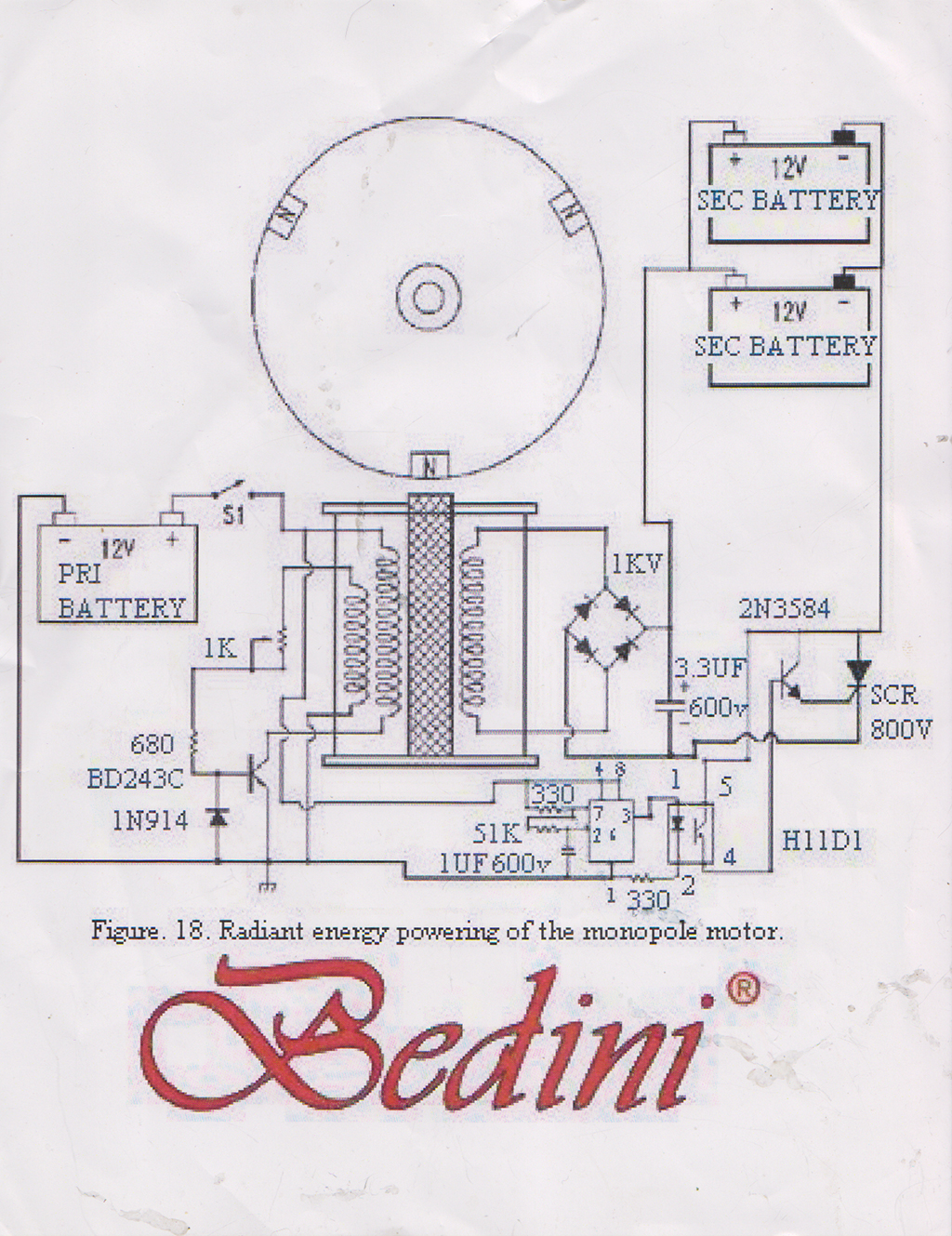
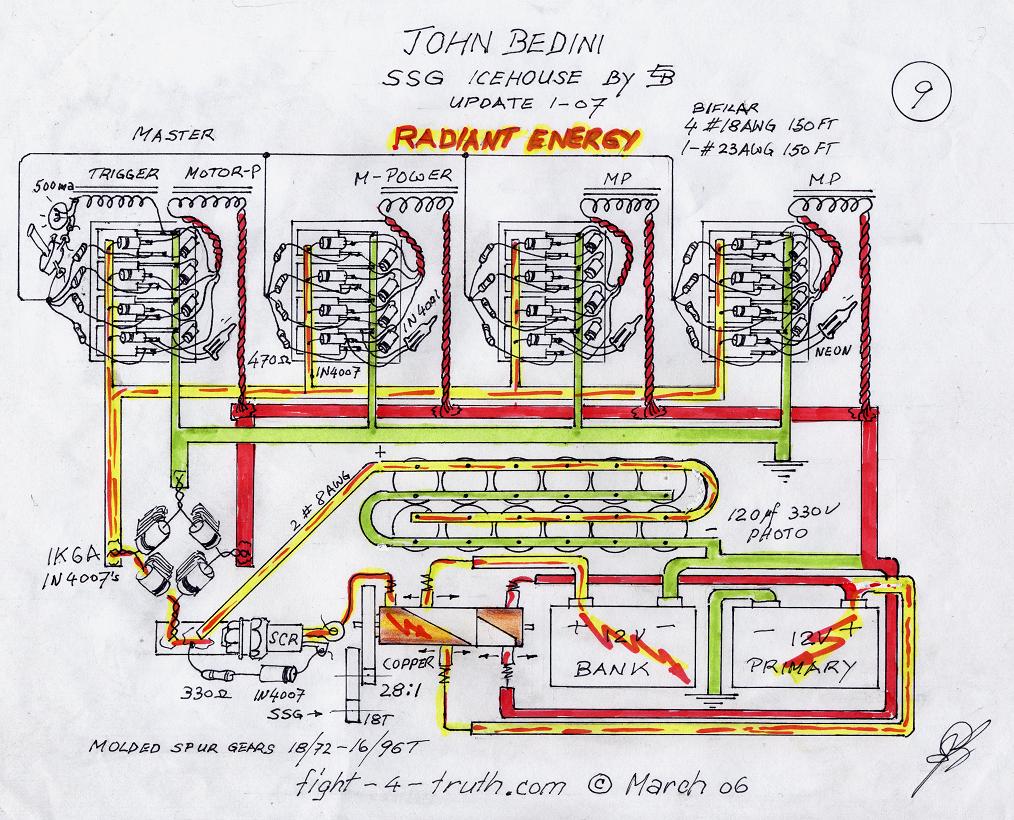
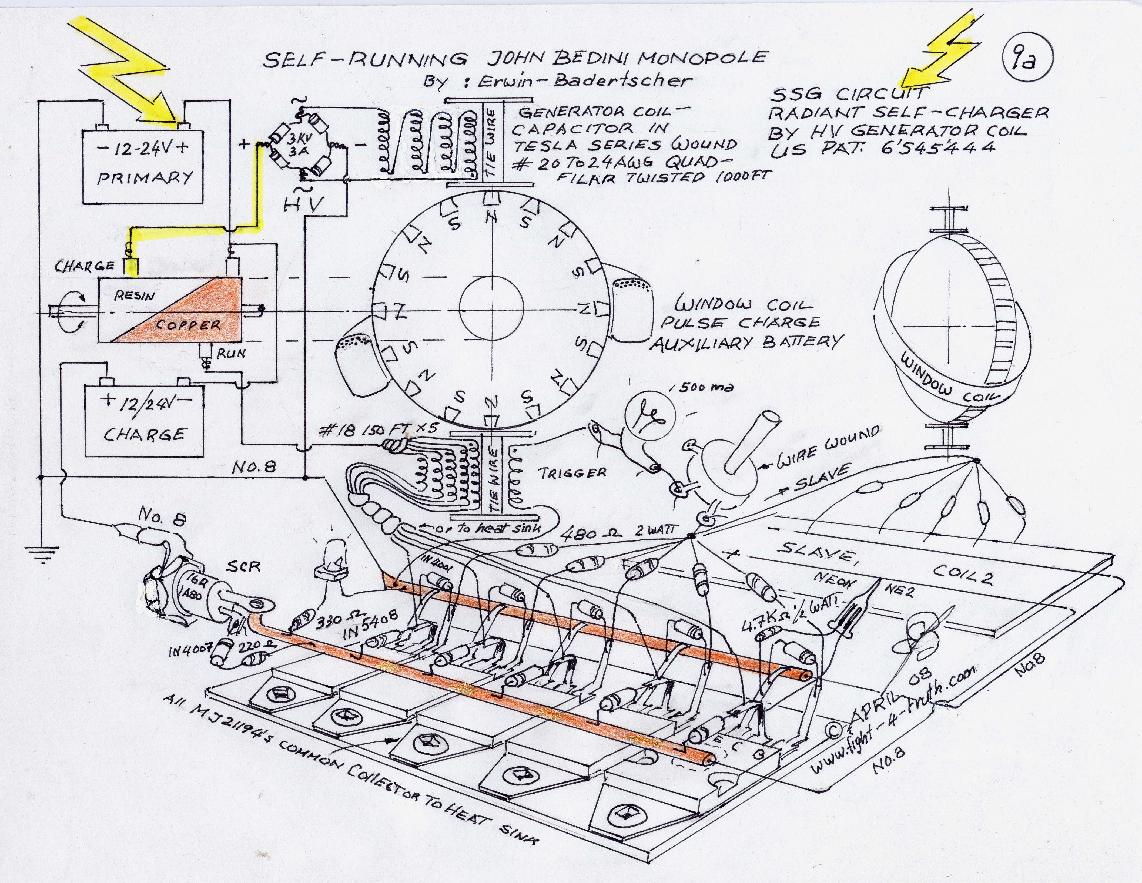




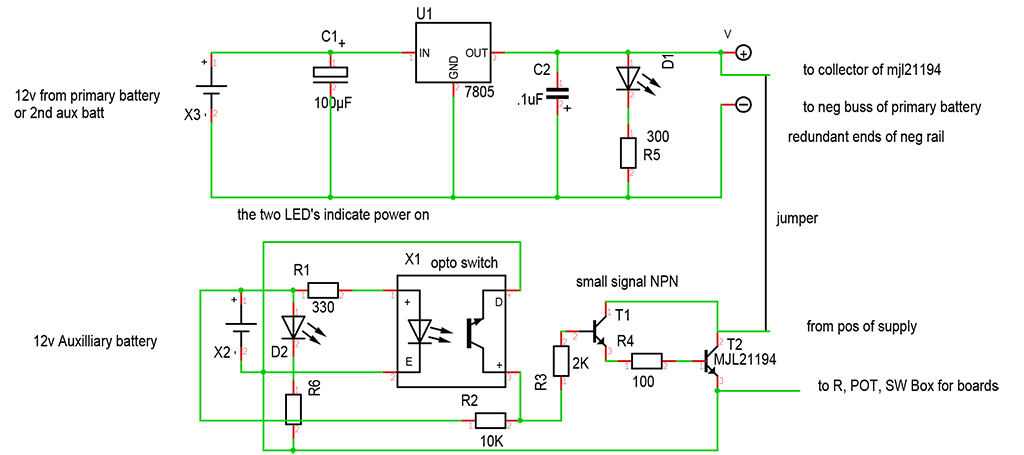
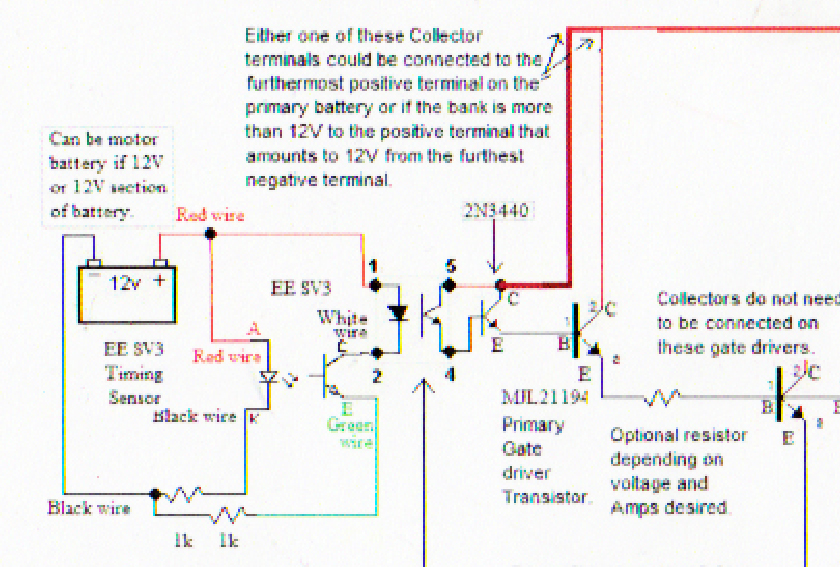





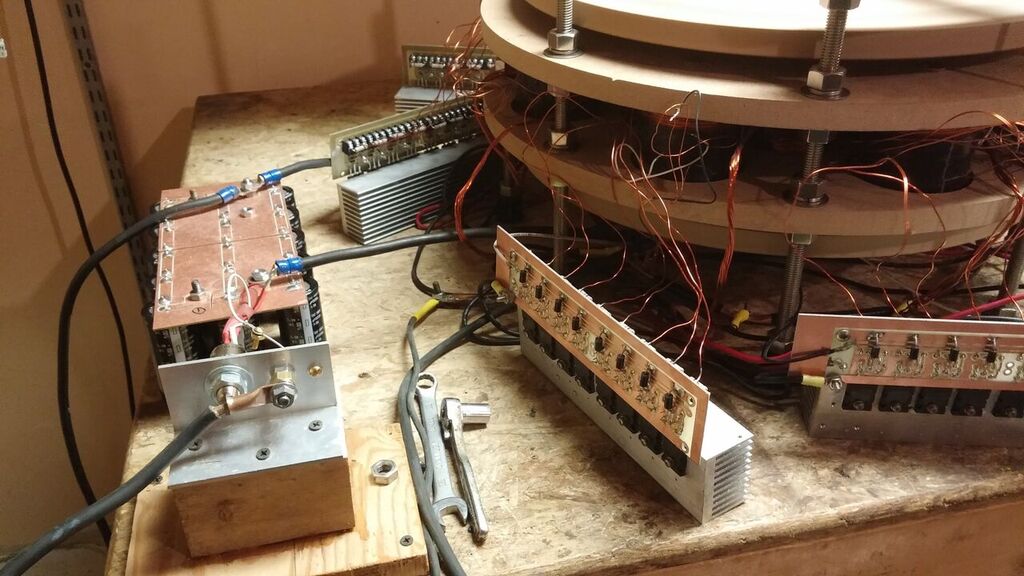
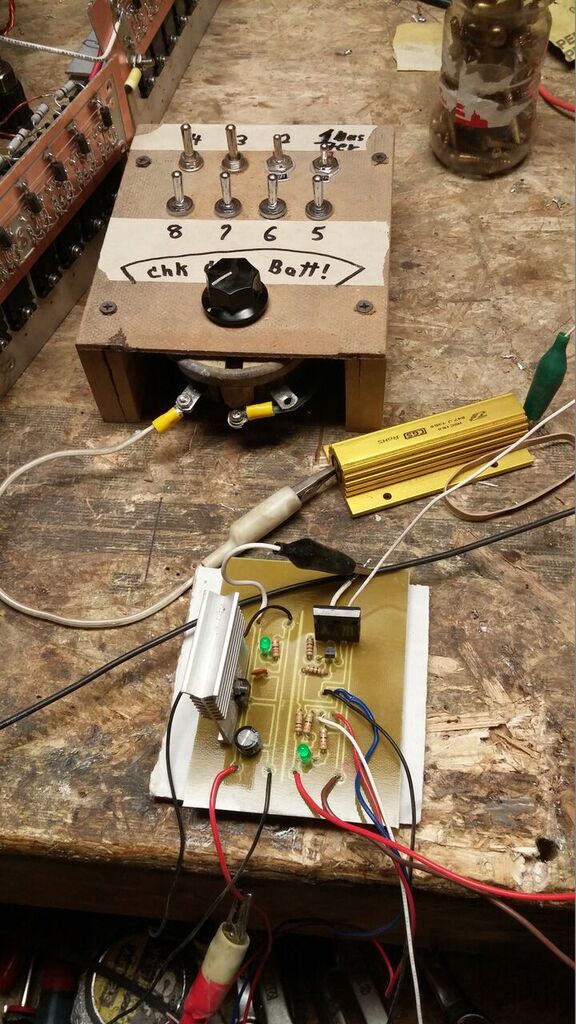
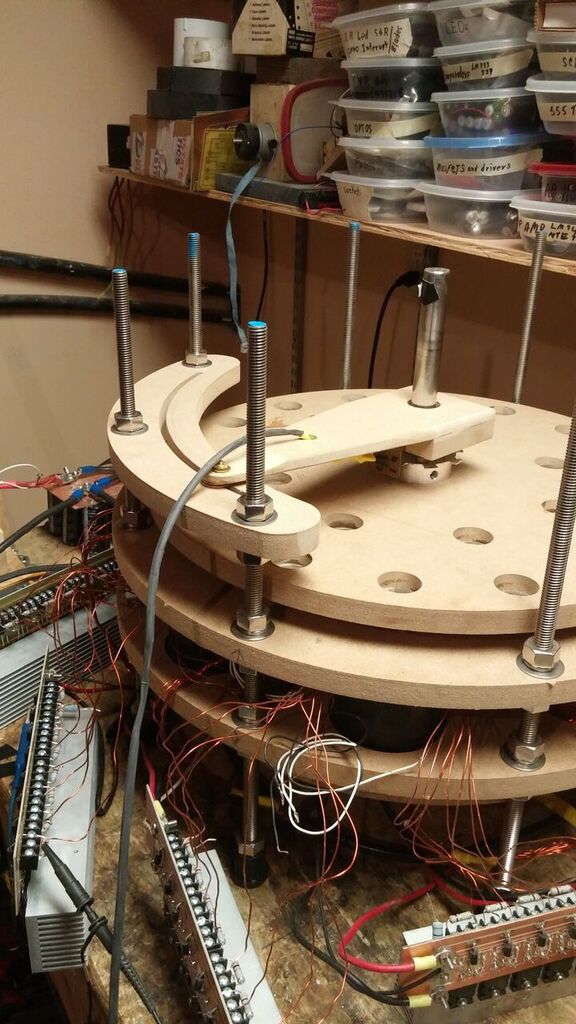

Comment